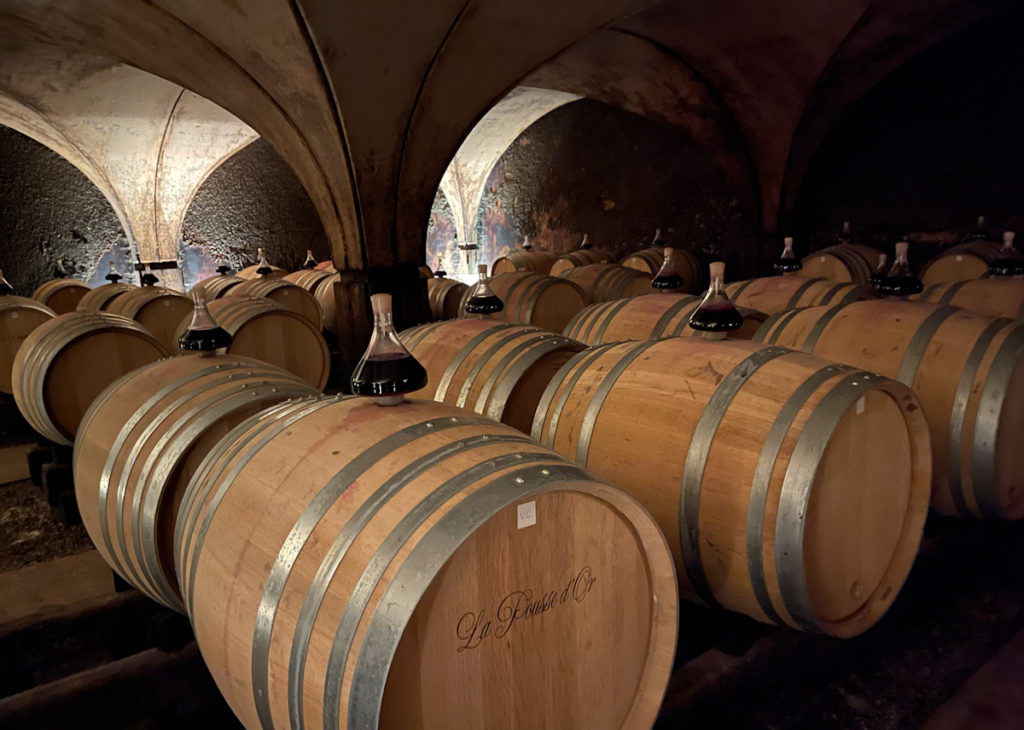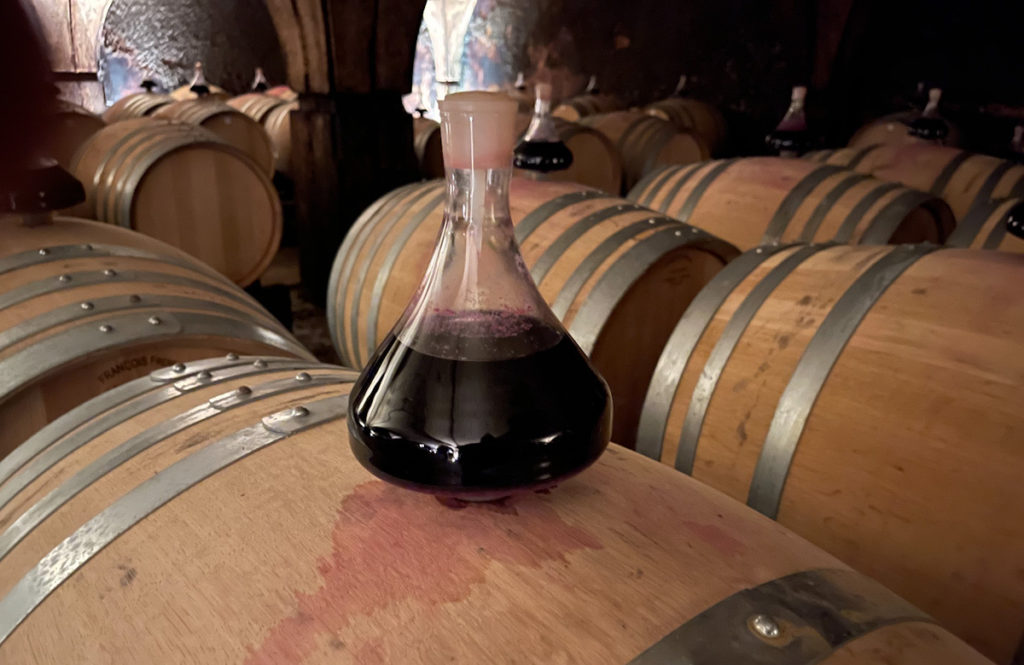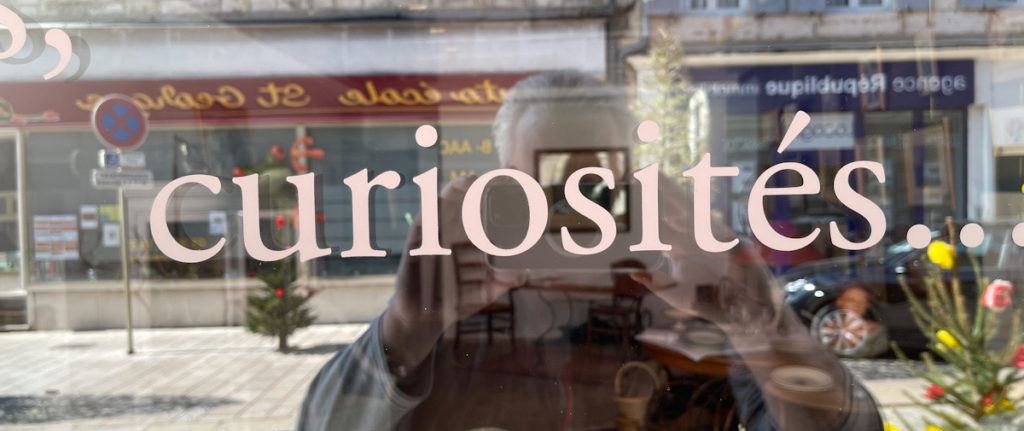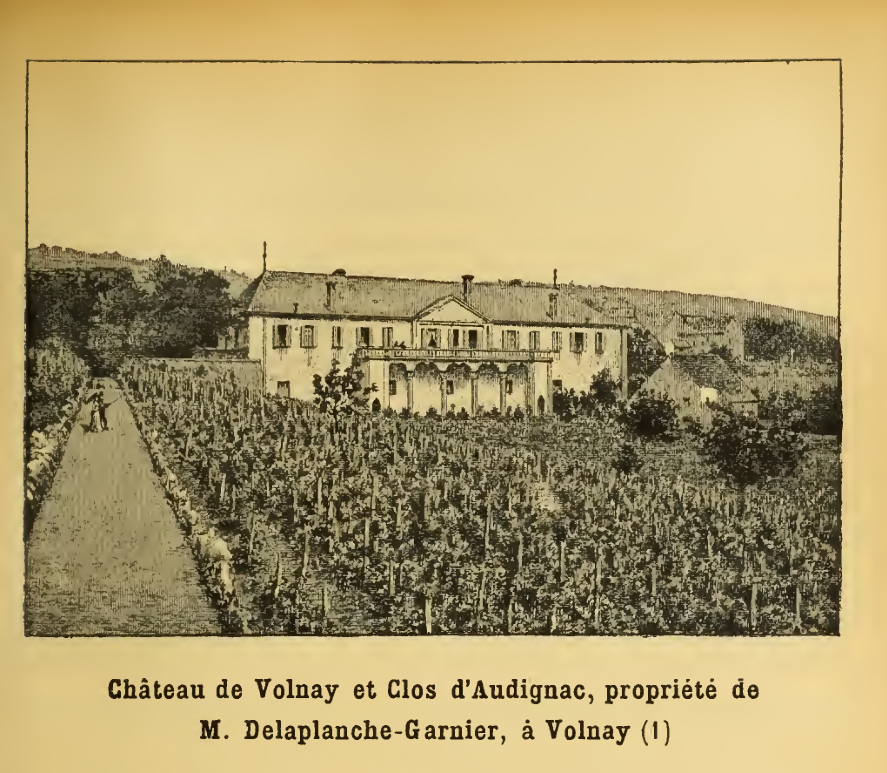La Pousse d’Or occupies a strange blind spot in my Burgundian mind, as the greatness of its historic efforts and its rebuilding under Patrick Landanger was just getting under way when I began to collect Burgundies in the mid- to late-1990s.
I never really knew the old estate management under Gerard Potel, and I didn’t follow the rebuilding of its reputation by Patrick Landanger in the early 2000s, when he expanded the domaine to its current size and improved quality to the present level.

What I can say, however, is that Pousse d’Or is a grand yet somewhat undervalued estate. Its wines can have greatness and refinement, and its viticultural and vinification endeavours makes them interesting and well-positioned in today’s Burgundy market.
With technical ingenuity and vinification perfection, the estate produces some hedonistic marvels with energy and the blessings of true vins d’emotion.
Today’s Domaine de La Pousse d’Or
Pousse d’Or today is an impressive domaine combining an historic Volnay backbone, the refinement of the Moine-Hudelot Chambolle estate, a pinch of Corton terroir, and a few graceful whites to complete the picture.
All are owned by the Landanger family, with creator Patrick Landanger now seconded by his son Benoît, expanding this impressive estate even further.

It is the brainchild of an engineer and inventor who, via his creativity, has put in place a financial foundation that even in this day and age can develop and expand with some of the best vineyards in the region. Buying vineyards in Les Amoureuses, Bonnes Mares, Corton, Puligny-Montrachet, and Chevalier-Montrachet requires huge investment and focus.
The history of the present-day Pousse d’Or is therefore complex, and it can – or rather should – be told via each vineyard individually, as this encompasses so much more than its core Bousse d’Or terroir in Volnay.
Laure Gasparotto’s 2001 book “Pousse d’Or or Bousse d’Or” reveals all the details and complexity. I will extract some of the stories that together give Pousse d’Or its place in Burgundian history – a more modest aim, yet a story that should be told.
What a fascinating estate!
Curiosity 1 – The Duvault link to Santenay

Jacques-Marie Duvault (1789-1874) married Sophie Blochet in 1817. Established in Santenay, he was an owner and grower, a wine merchant, and a General Councillor of the Côte d’Or. He was renowned for his work in oenology, and is one of the most remarkable figures in Burgundy’s vinous history.
He acquired the vineyard Bousse d’Or in 1857, and thus became an influential landowner in Volnay. His holdings encompassed more than 130 ha at the peak of his career, and his expansion culminated in 1869 when, at the age of 79, he acquired the famed Romanée-Conti in Vosne-Romanée.
At his death, the vineyards – like the rest of the vast estate he built – were divided between his daughters Claudine-Constance Massin and Henriette Dupuis. Their inheritances were later further divided down the family tree.
The Duvault family ownership ended in 1964, when a joint venture among Jean-Nicolas Ferté, Gerard Potel, and Louis Seysses (the father of Jacques Seysses of Domaine Dujac) acquired the Duvault estate in Santenay that owned Bousse d’Or as well as plots in other Volnay vineyards. Thus ended the historic link with Domaine de la Romanée-Conti and the owners of this vineyard, the de Villaine family.
With this deal in 1964, Domaine de la Pousse d’Or as we know it today was created, including Bousse d’Or.
My tasting notes from the Pousse d’Or tasting are therefore divided into two sections: the core Volnay block, and then the later additions from Corton, Chambolle, and Puligny, which will form a separate article.
But let’s go to Santenay first!
Please note – the wines were getting ready for bottling – hence samples taken from the tanks.
The Santenay start
The first wine in the tasting is the Santenay Clos Tavennne, a legacy from Jacques-Marie Duvault-Blochet’s ownership (see above).
The Domaine de La Pousse d’Or Santenay Clos Tavannne 2020 is rich and velvety, a classic 2020 and Santenay. It’s concentrated and powerful, with a bit of the Santenay edge. It has a nice imprint of the domaine’s style reflected in the fine perfumed notes that grace it.
(Drink from 2029) – Very Good – (88-89p) – ![]()
The Volnay core
With the domaine’s core vineyards in Volnay, I prefer to switch the tasting order a bit, mentioning the monopole Clos d’Audignac first, as it is is not part of the amphorae project in 2020.

The Clos d’Audignac is located just in front of Domaine de la Pousse d’Or’s main building, the old Château de Volnay. It was acquired by Ferté and Potel at auction in 1964.
The Clos d’Audignac is a 0.80-hectare monopole with an eastern slope that also faces slightly northward. It’s just in front of the estate, and enclosed by a wall on the lower side. The vines were planted in 1966, although there remains a core of older vines planted in 1929.
Domaine de La Pousse d’Or Clos d’Aurignac 2020
The Clos d’Audignac 2020 is a graceful wine, intense, with lovely freshness and energy. It has a beautiful core of fine red fruit – very delicate and finely focused, and perhaps the most feminine of the Pousse d’Or 2020s. It’s quite a sensual wine, with a somewhat cooler note due to its slightly northerly exposure.
(Drink from 2034) – Very Fine – (93p) – ![]()
The next wine is the Volnay Caillerets, coming from one of the estate’s holdings within Les Caillerets, the other being the Clos des 60 Ouvrees, a walled vineyard located in the southern part of Caillerets.
Like the domaine’s two top Volnay cuvees – the Bousse d’Or and the Clos des 60 Ouvrees – the regular Caillerets is made in two versions: one with elevage in traditional oak barrels and one with elevage in 800 liter amphoraes. In both cases the wine has around 12 months of maturation in its choosen containers, and 16-18 month of total elevage.
You need to login as a Premium subscriber to read the rest of this article. If you are not a Premium Subscriber, use the subscribe function and sign-up.

 - A true vin d’émotion – a Burgundy of passion
- A true vin d’émotion – a Burgundy of passion - A truly hedonistic wine – lively and enjoyable
- A truly hedonistic wine – lively and enjoyable - A vivacious wine for pure indulgance
- A vivacious wine for pure indulgance - A potential vin d´émotion - frais et léger
- A potential vin d´émotion - frais et léger
Leave a Reply
You must be logged in to post a comment.